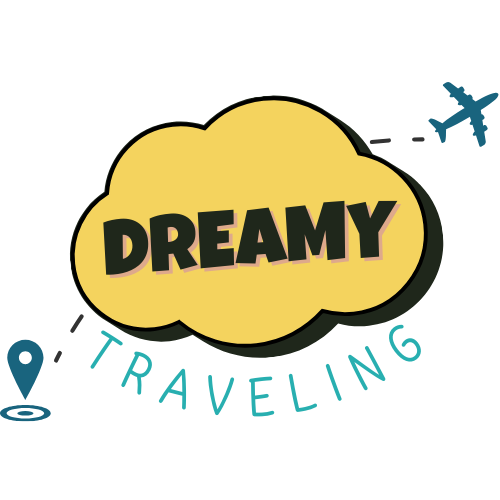12 Essential Tips for Visiting Zion National Park
Watch more on YouTube.
If you’re planning a trip to Zion National Park and aren’t quite sure where to start, you’re not alone. Between its iconic hikes, shuttle system, and limited parking, Zion can be tricky to plan. This guide breaks down 12 essential tips that will make your visit smoother, safer, and far more enjoyable.
1. Check Water Levels and Flash Flood Warnings Before Hiking The Narrows
The Narrows is one of Zion’s most famous hikes—and for good reason. You’ll wade directly through the Virgin River, surrounded by towering canyon walls. But because you’re hiking in a river, conditions depend heavily on water levels and flood risks.
The National Park Service (NPS) monitors flow rates and will close the hike if conditions are unsafe. When the flow rate exceeds 150 cubic feet per second (CFS), The Narrows is typically closed. This often happens in spring due to snowmelt or after heavy rainfall. Check the NPS website or ask at the Visitor Center before heading out.
2. Be Aware of Toxic Cyanobacteria in the Virgin River
The Virgin River often contains toxic cyanobacteria, which can cause health issues if ingested or if it enters open wounds. Always carry your own drinking water and avoid swallowing river water. If you’re hiking The Narrows, keep your head above water and use a walking stick to prevent falls.
Cover any cuts or open sores with waterproof bandages. If you experience unexplained symptoms after river exposure, contact the Utah Poison Control Center at 1-800-222-1222 or call emergency services.
3. Get a Permit for Angel’s Landing
Angel’s Landing is another of Zion’s iconic hikes, known for its breathtaking views and dizzying drop-offs. To manage crowds, the final half-mile section now requires a permit through the NPS lottery system. You can apply in advance or enter a last-minute lottery the day before your hike.
If you don’t get a permit, you can still hike up to Scout Lookout without one. This section alone offers fantastic views and a challenging but rewarding climb.
4. Book Your Accommodation Early
Lodging in and around Zion fills up months in advance, especially between spring and fall. Springdale—the town just outside the park—is the most convenient option. It’s connected to the park by a shuttle line that links directly to the main Zion shuttle system. Whether you prefer a hotel, vacation rental, or campsite, book as early as possible to avoid disappointment.
5. Know the Shuttle Schedule
During most of the year, the main Zion Canyon is closed to private vehicles. The free park shuttle is the only way to access many trailheads. Shuttles run from early morning to late evening, typically starting around 6 a.m. in summer. Schedules vary by season, so always check the latest times online or at the Visitor Center.
Missing the last shuttle means a long walk back—so plan accordingly.
6. Check Trail Conditions Before You Go
Zion’s terrain is constantly changing due to weather, flash floods, and rockfalls. Trails sometimes close unexpectedly for safety reasons. Before setting out, check for updates on the NPS website or at the Visitor Center. Always have a backup plan in case your chosen trail is closed.
7. Take a Break Under the Cottonwood Tree at Zion Lodge
In front of Zion Lodge sits a massive cottonwood tree that provides a shady, peaceful spot for a rest. It’s an ideal picnic location and a great place to unwind after a hike. Grab an ice cream or sandwich from the lodge café, stretch out on the grass, and enjoy the view—you might even spot some wildlife.
8. Explore Beyond Zion Canyon
Most visitors stay in the main canyon, but there’s much more to Zion. Don’t miss:
East Mesa and Checkerboard Mesa: Unique sandstone formations and quieter trails.
Kolob Canyons: Deep red cliffs and fewer crowds in the park’s northwest section.
Kolob Terrace Road: A scenic drive through forests, farmland, and desert landscapes ending at Lava Point Lookout—a peaceful escape from the busy main canyon.
9. Buy the America the Beautiful Pass
If you’re visiting multiple national parks within a year, the America the Beautiful Pass is worth it. For about $80, it covers entrance fees to more than 2,000 federal recreation sites, including all U.S. national parks, for one vehicle (up to four people).
10. Join a Ranger-Led Program
Zion offers excellent ranger-led walks, talks, and evening programs that highlight the park’s geology, wildlife, and history. They’re free with park admission and add a deeper understanding of the area. Check schedules at the Visitor Center or online and plan your day around one if you can.
11. Use a Detailed Itinerary
With so much to see, Zion can feel overwhelming to plan. A structured itinerary helps maximize your time while avoiding crowds. Multi-day itineraries (1-, 2-, or 3-day options) often include hour-by-hour suggestions, hiking routes, and shuttle information. Whether you follow one exactly or just use it as a framework, it’ll make your visit far smoother.
12. Arrive Early—It’s the Most Important Tip
The best thing you can do for your trip: arrive early.
Temperatures in summer can exceed 100°F (38°C), and parking lots fill up before 8 a.m. Arriving between 7:00–7:30 a.m. gives you cooler hiking weather, better lighting for photos, and a much calmer start to the day.
If you miss the early window, another good strategy is to arrive around 3:30 p.m., when crowds begin to thin. Parking usually opens up again, and late afternoon light makes for incredible photos.
Final Thoughts
Zion National Park is one of the most breathtaking places in the U.S., but it rewards preparation. Understanding shuttle schedules, booking early, and knowing current trail conditions can make the difference between a stressful visit and a smooth one. Follow these twelve tips and you’ll be well on your way to an unforgettable trip through Utah’s most iconic canyon.
Be sure to check our guide on a fantastic 7-day roadtrip that includes Zion.
